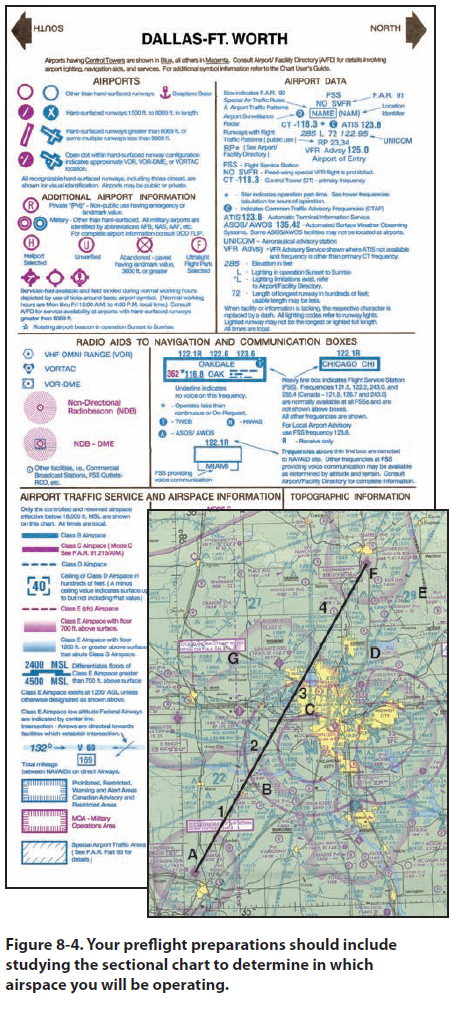Chapter 8 Airspace Classification and Requirements
Uncontrolled Airspace: Class G Airspace
Uncontrolled or Class G airspace is the portion of the
airspace that has not been designated as Class A, B,
C, D, or E. It is therefore designated uncontrolled airspace.
Class G airspace extends from the surface to
the base of the overlying Class E airspace. Although
air traffic control has no authority or responsibility to
control air traffic in Class G airspace, you should remember
there are visual flight rule (VFR) minimums
(visibility and cloud clearance) which apply to Class
G airspace.
Special Use Airspace
Special use airspace exists where activities must be
confined because of their nature. In special use airspace,
limitations may be placed on aircraft that are
not a part of the activities. Special use airspace usually
consists of:
Prohibited Areas.
Restricted Areas.
Warning Areas.
Military Operation Areas.
Alert Areas.
Controlled Firing Areas.
It is important you review the current sectional chart
for the area you will be flying in to make sure you
avoid operating in special use airspace without proper
training and authority. [Figure 8-4]

Prohibited Areas
Prohibited areas are established for security or other
reasons associated with the national welfare. Prohibited
areas are published in the Federal Register and
are depicted on aeronautical charts.
Restricted Areas
Restricted areas denote the existence of unusual, often
invisible hazards to aircraft such as artillery firing,
aerial gunnery, or guided missiles. An aircraft may
not enter a restricted area unless permission has been
obtained from the controlling agency. Restricted areas
are depicted on aeronautical charts and are published
in the Federal Register. Restricted areas may have
altitude limitations and hours of operation. Aircraft
operations are not restricted if the restricted area is
not active.
Warning Areas
Warning areas consist of airspace which may contain
hazards to nonparticipating aircraft in international
airspace. The activities may be much the same as
those for a restricted area. Warning areas are established
beyond the 3-mile limit. Warning areas are depicted
on aeronautical charts.
|

